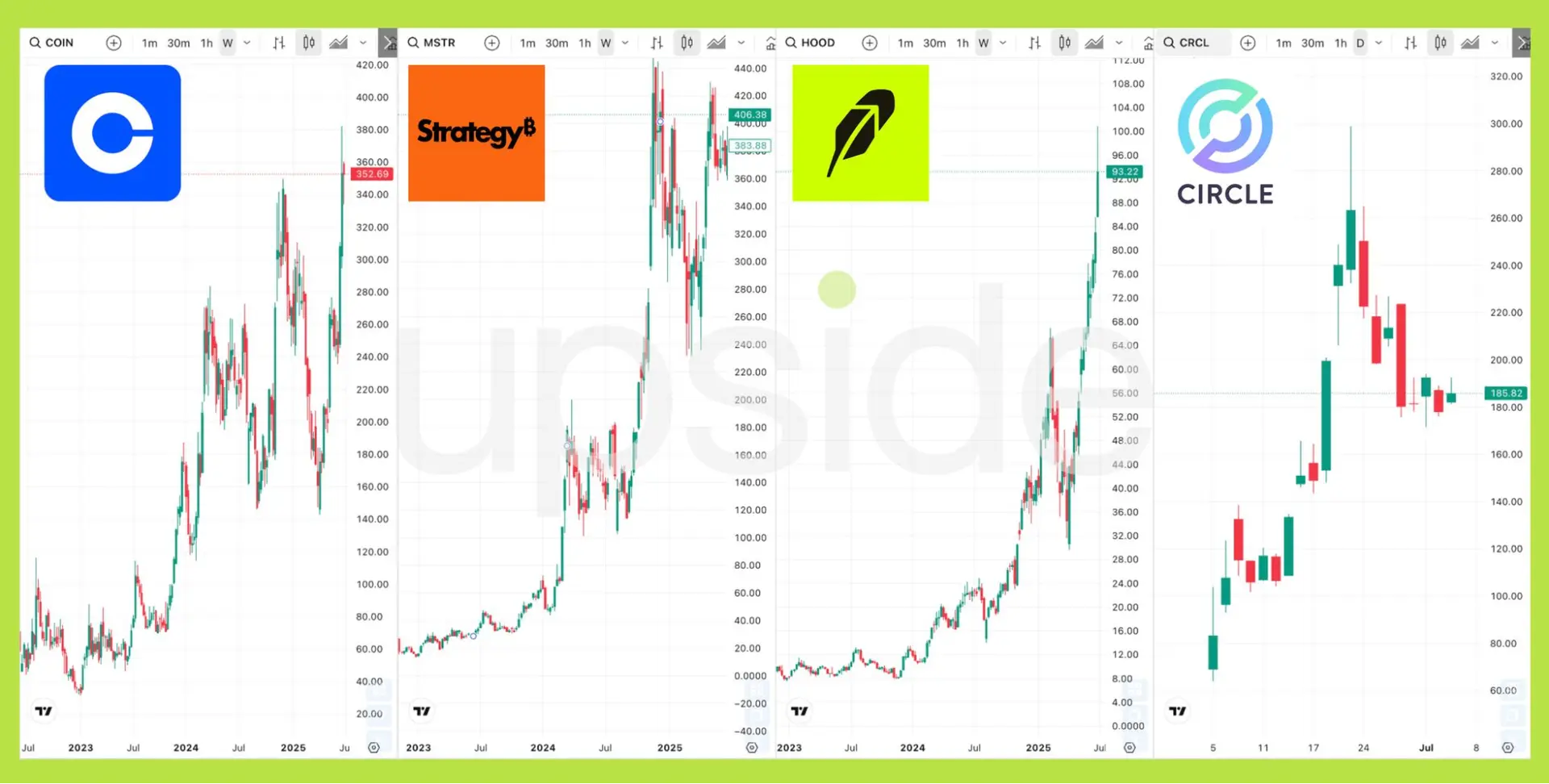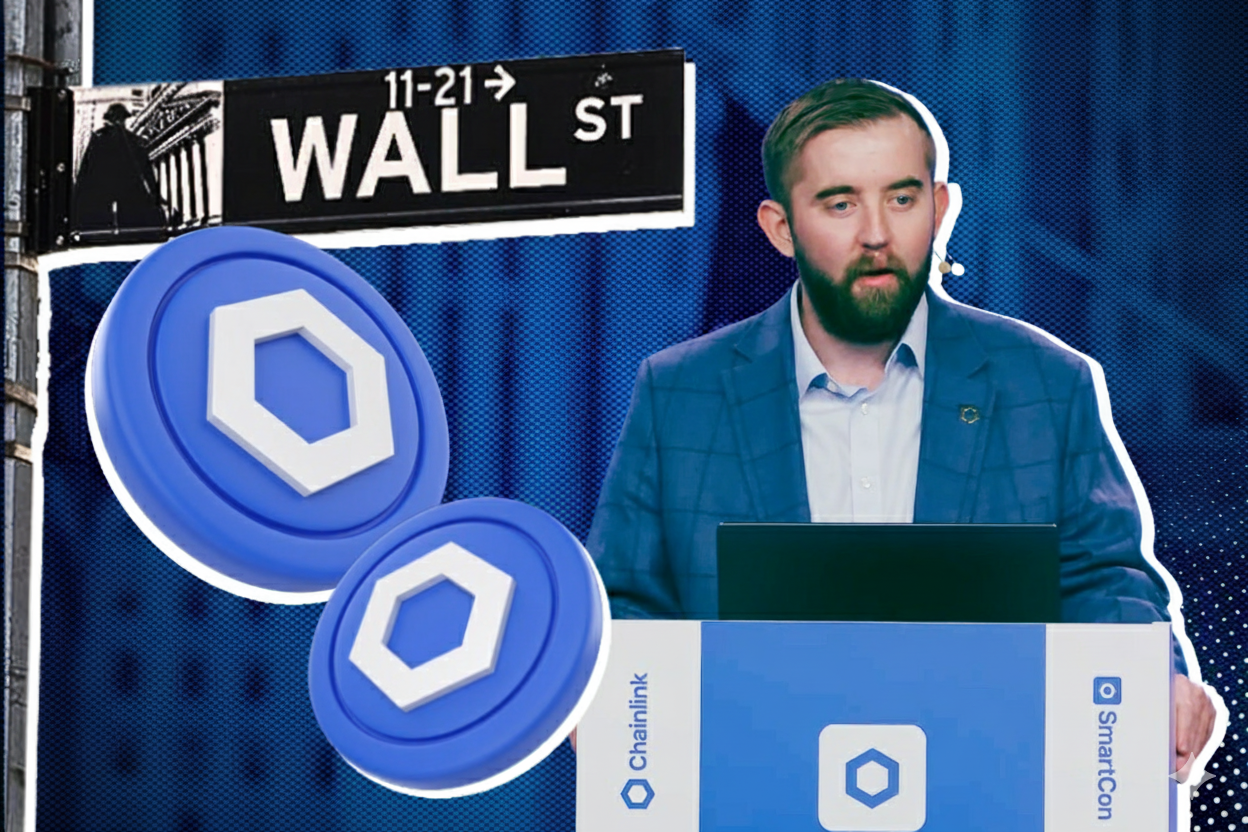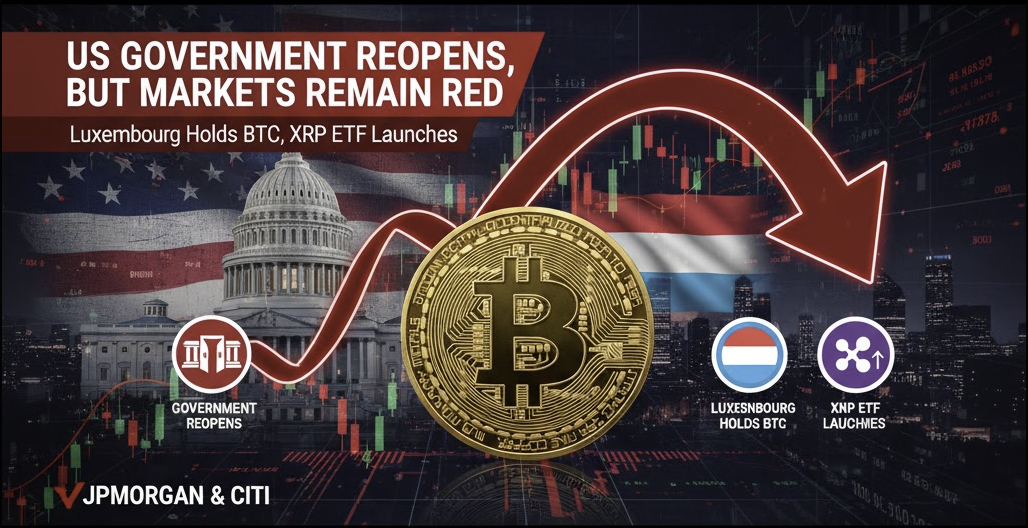Binance founder CZ has publicly accused Coinbase of orchestrating a smear campaign against President Trump, World Liberty Financial (WLF), and Binance itself. The alleged motivation? To prevent a presidential pardon for CZ and to hinder Binance's expansion in the US market. What's the truth behind this high-stakes crypto drama?
The Genesis of the Coinbase-Binance Drama
The situation exploded on the morning of July 13, 2025, when Matt Wallace, a prominent X influencer with over 2.3 million followers and a pro-Trump stance, posted a shocking accusation. He claimed Coinbase was the "anonymous source" behind negative media campaigns targeting Trump, WLF, and Binance.

Wallace suggested that Coinbase feared a potential presidential pardon for CZ from Trump, which would pave the way for Binance to legally re-enter the US market. This information gained significant traction when CZ himself retweeted the post, signaling his endorsement of the accusation.
CZ retweeted the post accusing Coinbase of "playing dirty" against Binance and CZ.
The accusation posits that Coinbase—an exchange known for its high fees (2-4%) and frequently criticized customer service—fears losing its dominant position in the US if Binance returns as a fully compliant entity. According to CoinGecko data, Binance commanded 37.5% of the market share volume among the top 10 centralized exchanges in Q1 2025, with $2 trillion in spot trading volume, while Coinbase, though leading in the US, holds a much smaller global share.
The drama truly escalated with a Bloomberg article on July 11, 2025, which alleged that Binance had written the smart contract code for World Liberty Finance's USD1 stablecoin—a project directly linked to President Donald Trump's family. According to the report, Binance holds up to 90% of the USD1 supply, potentially earning tens of millions of dollars in interest from holding this coin, while WLFI sold tokens worth $550 million, bringing approximately $390 million to the Trump family.
While it cannot yet be confirmed that the money Trump received directly originated from CZ's support, the most suspicious aspect is why, out of USD1's $2.2 billion market capitalization, only $50 million was issued on Ethereum, while the remaining $2.15 billion USD1 was issued on BNB Chain (accounting for 97%). In a podcast interview on May 6, 2025, on Rug Radio, CZ admitted he had submitted a pardon request to US President Donald Trump after his 4-month prison sentence for violating anti-money laundering laws. This timing is unlikely to be coincidental, as the pardon request was filed shortly after Trump's USD1 stablecoin was chosen by Abu Dhabi for a $2 billion investment into Binance.

CZ has denied the allegations and threatened to sue Bloomberg for defamation, implying that this was "another attack piece funded by a competitor," in this case, Coinbase.
CZ accused Coinbase of paying Bloomberg to spread false information.
However, the accusation that Coinbase is behind this remains speculative, based on an anonymous source, with no concrete evidence yet. This lays the groundwork for a larger question: Is CZ's pardon part of a broader network of crypto-political interests?
President Trump: Profiting from Crypto While in Office?
To understand the motivations at play, we need to examine the evolving crypto regulatory environment, which creates a logical transition from strict regulation to development opportunities. Under Gary Gensler's tenure as SEC Chairman (2021-2025), the crypto industry faced immense challenges. A series of lawsuits targeting crypto companies like Ripple, Polkadot, Binance, Coinbase, and FTX significantly hampered project development. This not only slowed the industry's explosion but also led to record lobbying spending by the industry in 2023 following the lawsuits.

The new SEC Chairman has opened doors for crypto projects to develop. However, since Trump appointed Paul S. Atkins as the new SEC Chairman in April 2025, the crypto market has seen significant easing. Atkins, who was crypto-friendly during his time as an SEC commissioner under Bush, has promoted innovation, such as approving more crypto ETFs and supporting stablecoins.
Trump himself has become deeply involved in the industry to profit: he has reportedly earned hundreds of millions of dollars from crypto projects, with his total income from the sector estimated at $600-620 million according to 2025 financial reports.
Specifically, Trump earned approximately $57.7 million from selling World Liberty Financial (WLFI) tokens—a DeFi project launched in September 2024, raising over $500 million in capital, and 60% controlled by the Trump family. The World Liberty Financial fund has invested in major tokens like ETH, TRX, LINK, AAVE, AVAX, etc.

World Liberty Financial's crypto investment portfolio.
Additionally, Trump has profited significantly from meme coins like $TRUMP (market cap nearing $5.5 billion, generating $100 million in trading fees). The USD1 stablecoin, launched in October 2024 under WLFI, has surpassed a supply of $2 billion, entering the top 10 stablecoins, with an airdrop for WLFI holders in April 2025.

Trump has also earned millions from NFTs: launching 5 collections from 2022-2025, selling tens of thousands of NFTs priced from $99, with some reselling for millions, and luxury items like "Crypto President" watches payable in Bitcoin.
President Donald Trump's intricate web in the crypto market.
Becoming President has allowed Trump to diversify his income, but it has also raised suspicions of conflicts of interest, especially when his pro-crypto policies (e.g., the GENIUS Act for stablecoins) might favor partners like Binance, leading to accusations from Bloomberg and rumors about Coinbase. This smoothly transitions to the history of competition, where exchanges are willing to clash to gain an advantage.
Coinbase's "Retaliation" for FTX?
The current drama between CZ and Coinbase is not a new event but may stem from historical conflicts within the crypto industry, particularly the collapse of FTX in 2022—a prime example of the fierce competition in this market. To understand better, let's rewind: Binance once invested significantly in FTX. However, the relationship quickly fractured due to intense competition for global market share. The situation exploded on November 6, 2022, when CZ publicly tweeted that Binance would sell off its approximately 23 million FTT holdings to manage risk, citing liquidity concerns.
A CoinDesk report revealed that Alameda Research (an investment fund and market maker owned by Sam Bankman-Fried) held the majority of its assets in illiquid FTT, posing a significant systemic risk. The market immediately panicked, and FTT's price plummeted over 80% in just a few days, from about $22 to under $2, leading to a massive wave of withdrawals from FTX, totaling approximately $6 billion in just 72 hours. SBF initially tried to reassure the community via a tweet, "FTX is fine. Assets are fine.", but later admitted his mistakes and sought a bailout agreement from Binance itself.
However, the agreement quickly fell through just one day later, as Binance conducted due diligence and discovered that FTX had severely misused customer funds, with a financial hole estimated at $8-10 billion. As a result, FTX filed for bankruptcy on November 11, 2022, marking one of the largest collapses in crypto history, causing billions of dollars in losses for investors and shaking the entire market (Bitcoin dropped 20% in that week alone).

SBF was arrested in the Bahamas in December 2022, extradited to the US, and sentenced to 25 years in prison in March 2024 for fraud, money laundering, and related charges, with an order to pay over $11 billion in restitution.
Binance clearly benefited greatly from this event, as it eliminated a direct competitor like FTX. This helped Binance solidify its leading position, with volume surging to 40% market share by late 2022.

FTX's collapse timeline since CZ announced selling FTT.
Although Coinbase indirectly benefited, it likely didn't entirely wish for FTX's collapse, as this inadvertently strengthened Binance's global position—a much larger competitor with lower fees and more diverse products—leading to increased competitive pressure in the US. The FTX incident exposed the dark side of industry competition: exchanges not only view each other as rivals but as "mortal enemies," willing to exploit weaknesses to eliminate competitors. CZ rarely takes such public action; his tweet was considered a direct attack on a competitor.
Currently, no articles show Binance and Coinbase directly suing or attacking each other, but CZ's actions implicitly confirm this. Could Coinbase be secretly attacking CZ and Binance? This may seem unrelated, but it impacts Coinbase's future survival against its major rival, Binance. Although no longer Binance's CEO, CZ plays a very important role for the exchange. Since CZ's imprisonment, Binance seemed to be overshadowed by competitors. But after his release in September 2024, Binance rapidly boomed with campaigns like Binance Alpha.
Binance Wallet quickly gained market share after Binance Alpha launched.
Perhaps Brian Armstrong's (Coinbase CEO) biggest concern is CZ's "strategic mind," capable of turning the tables with just a tweet or a political alliance, such as his current relationship with Trump. The accusation that Coinbase is "retaliating" through Bloomberg could be Binance's preemptive strike, but it reflects a reality: in the crypto industry, where the US market is worth hundreds of billions of dollars, major players are willing to use every tool from media to lobbying to protect their territory. The FTX incident was not just a lesson in transparency but also a precedent for underlying conflicts like today's drama.
The Battle for Market Share: Why Exchange Leaders Clash
The drama between Coinbase and Binance reflects a core reality in the crypto industry: the US market represents the most attractive "pie," but also the biggest hurdle any exchange must overcome to achieve sustainable growth. As a global financial hub, the US controls massive capital flows, attracting institutional and wealthy individual investors, making competition for access incredibly fierce for any platform.
US legal regulations are particularly stringent, creating a major barrier that forces exchanges to acquire separate licenses, such as Binance.US and OKX.US, which strictly adhere to KYC/AML regulations from the SEC and FinCEN. Having a license not only opens doors to millions of domestic users but also serves as a "passport" for international expansion, thanks to the credibility derived from a leading legal system.
Moreover, this is an opportunity to demonstrate a company's transparency and credibility, paving the way for listing on US stock exchanges. In 2024-2025, the market has seen institutional investor capital flow into truly profitable crypto companies like Coinbase, Circle, and Robinhood, rather than just Altcoins.
Capital flowing into profitable crypto companies' stocks.
This is precisely why Robinhood—the stock trading platform—spent approximately $200 million to acquire Bitstamp to gain access to European and US licenses, expand its user base, and intensify competition with Coinbase and Binance.US. The US market thus becomes a fierce "battleground" between giants like Binance, Coinbase, OKX, Kraken, and Robinhood.

In summary, in the coming period, legal frameworks will control the crypto market even more tightly. To survive and thrive, exchanges will be forced to deploy every strategy from political lobbying to alliances or media campaigns to solidify their positions, with a particular focus on legal compliance and licensing. This battle is expected to intensify further with the involvement of governments, financial institutions (like BlackRock with its $100 billion crypto ETFs), media, and political forces (like Trump with personal interests from WLFI).
How many "factions" will emerge? A multipolar system with multiple alliances or a unipolar one under dominant US influence? This is a thought-provoking question for the future of the industry.
Sources
- Matt Wallace (X/Twitter)
- CoinGecko
- Bloomberg
- Rug Radio Podcast (CZ interview)
- SlowMist
- DappRadar
- Statista
- Finder (Vietnam Crypto Survey)
- Paul Tudor Jones (CNBC interview)
- Fidelity Digital Assets
- Binance Research (historical data on FTX collapse)
- Robinhood Investor Relations
- Ant Group
- IT Mining Investor Relations
- LQWD Technologies
- El Salvador Treasury
- MicroStrategy Investor Relations
- CoreWeave Investor Relations
- The Smarter Web Company
- Universal Digital
- Digital Commodities
- ANAP
- Bank of America Research
- Emirates Airline
- Kaspersky
- Bit Digital Investor Relations
- Vanadi Coffee Investor Relations
- Genesis
- JPMorgan Chase
- Federal Housing Finance Agency (FHFA)
- Representative Maxine Waters
- Senator Elizabeth Warren
- Senator Cynthia Lummis
- Tom Lee (Fundstrat Global Advisors)
- SharpLink Gaming Investor Relations
- US House Financial Services Committee
- Justin Sun (Tron)
- 10X Capital
- Rumble Platform
- Centrifuge
- S&P Dow Jones Indices
- Ripple Labs
- Office of the Comptroller of the Currency (OCC)
- Bitget Wallet
- Mastercard
- CZ (X/Twitter)
Disclaimer
This article is for informational purposes only and should not be considered financial advice. Please do your own research before making investment decisions.


.png)





